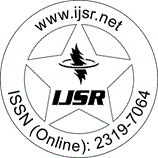Downloads: 1
India | Civil and Environmental Engineering | Volume 14 Issue 11, November 2025 | Pages: 1082 - 1085
Qualitative Risk Evaluation Framework and Exploration of Risk Factors for Residential Building Construction Project
Abstract: The construction industry inherently involves numerous uncertainties that pose significant risks to project performance, profitability, quality, and productivity. Eliminating all potential risks is neither feasible nor economical; therefore, identifying and prioritizing the most impactful risks is essential. Effective risk management plays a vital role in all stages of a construction project, from planning to completion. This study concentrates on qualitative risk assessment in residential building construction. A detailed literature review was undertaken to identify the most common risk factors associated with residential projects. Based on the collected data, the study applies a qualitative risk analysis framework supported by a probability'impact matrix to evaluate and categorize risks according to their likelihood and potential effect. The findings aim to enhance the understanding of risk prioritization and provide practical recommendations to strengthen risk management practices within residential construction projects.
Keywords: Risk Management, Qualitative Risk Analysis, Probability?Impact Matrix, Residential Construction, Risk Evaluation Framework, Data Collection, Questionnaire Design
How to Cite?: Anil Rathod, "Qualitative Risk Evaluation Framework and Exploration of Risk Factors for Residential Building Construction Project", Volume 14 Issue 11, November 2025, International Journal of Science and Research (IJSR), Pages: 1082-1085, https://www.ijsr.net/getabstract.php?paperid=SR251112212923, DOI: https://dx.doi.org/10.21275/SR251112212923
